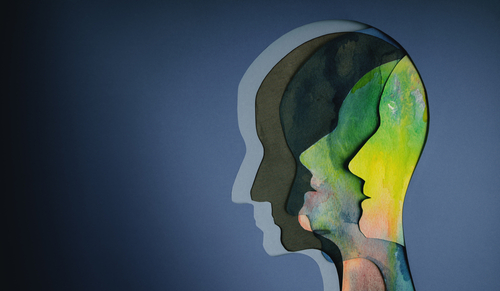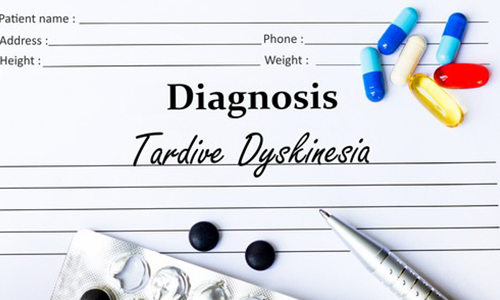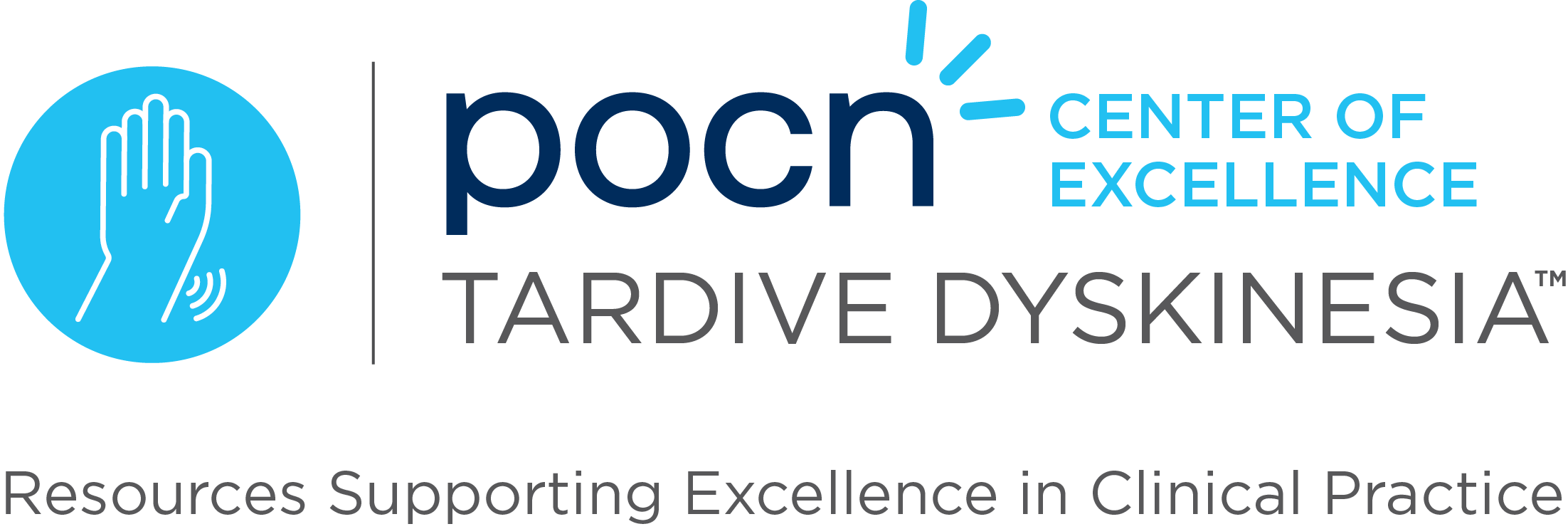Study Highlights Risk Factors and Antipsychotic Use Patterns in Patients With Bipolar Disorder and Tardive Dyskinesia

In a recent study, researchers aimed to understand the effects and patterns of tardive dyskinesia (TD+) on the quality of life and treatment results in individuals with bipolar disorder (BD). Both patients with and without TD were studied.
Unraveling Tardive Syndrome: Involuntary Movements and Sensory Complaints Persist Despite New Antipsychotic Drugs

Researchers in a recent study gathered information on tardive syndrome (TS) as TS continues to persist despite the availability of newer antipsychotic drugs. TS is a secondary syndrome resulting from the use of dopamine receptor-blocking agents, and it can manifest in different forms such as dyskinesia, dystonia, akathisia, tremors, and parkinsonism. These symptoms often persist even after discontinuing the medication and may worsen over time. Treatment options for TS involve discontinuation or replacement of the medication with atypical antipsychotics like quetiapine or clozapine. Additionally, dopamine depleters such as tetrabenazine and its derivatives (deutetrabenazine and valbenazine) are used to alleviate symptoms with fewer side effects. Deep brain stimulation of the globus pallidus internus has also shown effectiveness in treating TS, particularly when medications fail to improve symptoms.
Study Uncovers Neural Network Vulnerability in Tardive Dyskinesia’s Orofacial Symptoms

In a recent study, researchers aimed to understand why tardive dyskinesia (TD) often exhibits orofacial symptoms, while also exploring the neural network involved.
Diagnostic and Treatment Basics in TD: A Review

Tardive dyskinesia (TD) involves involuntary movements of the tongue, lips, face, trunk, and extremities, and it can be linked to considerable functional impairment and can be socially stigmatizing. Once a TD diagnosis is recognized, it is often irreversible. It is crucial for an accurate and early diagnosis, as the risk of TD permanence increases with time. Authors of this article urge clinicians to be educated on patients who are most at risk for TD and give appropriate clinical examination or use the Abnormal Involuntary Movement Scale. The authors also state that patients and their caregivers should be educated about the risks of TD with antipsychotics, as well as any alternatives, and to know the early signs of TD. The authors of this article provide a review of both the diagnostic and treatment basics of TD.
Using “Extrapyramidal Symptoms” in Practice: Expert Perspective

In this article, John J. Miller, MD, editor-in-chief of Psychiatric Times™, gives insight on the diversity of movement disorders that may result from the use of dopamine-2 receptor blocking agents. He explains that because the diagnosis and treatment of different movement disorders can be considerably different, treating one of them can worsen another. Therefore, he urges healthcare professionals to stray from using the term extrapyramidal symptoms, or EPS, as he has always thought that EPS was too vague and nondescript of a term, as its definition consists of various potential movement disorder adverse effects. Dr. Miller explains that drifting from this term can help improve the diagnosis and treatment of different movement disorders that can be caused by the use of dopamine-2 receptor blocking agents. He gives examples to support his point-of-view and how the community has gained a better understanding of the connection between dopamine-2 receptor blocking agents and movement disorders.
An Overview of Extrapyramidal Side Effects

One of the most common adverse effects from dopamine-receptor blocking agents are drug-induced movement disorders, or extrapyramidal side effects (EPS). The below link walks through the cause, pathophysiology, and presentation of EPS. The authors also highlight the types of drugs that are known to cause EPS and a summary a both the symptoms and treatment of EPS. The role of the healthcare team in improving outcomes for patients who have EPS is also discussed.
Video-Based Review: Differentiating Tardive Dyskinesia

It is important for an accurate diagnosis of tardive dyskinesia (TD), as well as a suitable treatment plan, as the symptoms of TD can be disruptive to both patients and caregivers. A misdiagnosis of TD can result in inaccurate interventions that may lead to harmful or poor outcomes. Researchers conducted a video-based review to help identify and differentiate TD in the psychiatric setting through looking at its clinical features and phenomenology, in addition to those of other antipsychotic-induced movement disorders. Movement phenomenology, current dose reduction or discontinuation of a dopamine-receptor blocking agent, and history of exposure to a dopamine-receptor blocking agent are how a differential diagnosis of TD is established. Challenges in diagnosing TD include other movement disorders that are linked to dopamine-receptor blocking agents, as well as abnormal behaviors and dyskinesias that are linked to older age or chronic mental illness. The duration of exposure can help in ruling out some drug-induced syndromes. Something else that the researchers note is to consider the possibility of TD presenting along with another drug-induced movement disorder. This can make diagnosis and management more complex in the same patient. Treatment options should be assessed with patients and their caregivers following documentation of the phenomenology, severity, and distribution of TD movements.
Exploring the Prevalence of Tardive Dyskinesia Through Electronic Medical Records

Researchers aimed to establish the prevalence of tardive dyskinesia (TD) that is recognized by clinicians in a real-world therapeutic setting. To do this, data from electronic medical records were examined from a large community mental health center. Researchers focused on clinician-identified TD in patients who have been prescribe antipsychotics, and they looked at psychiatric provider meetings of 120,431 distinct adult and child patients from January 2013 to December 2017.
Their results showed that 50% of patients who were prescribed antipsychotics had Abnormal Involuntary Movement Scale (AIMS) data reported in their medical records, with just 1% of the patients who had a positive AIMS recognizing TD. Testing with AIMS represented the greatest amount of all recognized TD in this set of patients; however, just one-third of the patients with reported positive AIMS had a clinical TD diagnosis that was recorded through the prescriber’s diagnostic impression list using billing code information. The researcher’s finding of just 1% of patients who were prescribed antipsychotics with TD is significantly lower than the known prevalence estimates of TD seen in prior research.
The researchers note the importance of identifying and treating TD with the newer availability of treatments that are approved by the US Food and Drug Administration. Policies and procedures for TD assessments can be put in place to confirm more regular and accurate identification of TD among patients who are prescribed antipsychotics.
Assessing Minimal Clinically Important Change in Abnormal Involuntary Movement Scale Score in Patients With TD Treated With Deutetrabenazine

Researchers sought to examine the minimal clinically important change (MCIC) in total motor Abnormal Involuntary Movement Scale (AIMS) score in patients with tardive dyskinesia (TD) who were treated with deutetrabenazine. Patients in the pooled analysis population consisted of those who were administered the study drug and had at least 1 postbaseline AIMS evaluation in both the ARM-TD and AIM-TD placebo-controlled studies. The US Food and Drug Administration approval of deutetrabenazine was based on these 2 studies.
Patient Global Impression of Change (PGIC) and Clinical Global Impression of Change (CGIC) were used to conduct MCIC analyses. In the analysis, 295 patients were included (deutetrabenazine, n = 197; placebo, n = 98). MCIC in patients who were treated with deutetrabenazine was -2.4 based on PGIC and -2.1 based on CGIC at Week 12. In patients who were treated with placebo rated minimally improved, mean change in baseline in total motor AIMS score was -1.4 based on PGIC and -1.5 based on CGIC. It was seen that from baseline to Week 12, about 66% and 55% of patients who were given deutetrabenazine achieved an improvement in total motor AIMS score by ≥2 and ≥3 points, respectively. Approximately 41% and 34% of patients in the placebo group saw improvement in total motor AIMS score by ≥2 and ≥3 points, respectively. From utilizing anchor-based methodology, researchers concluded that a decline in total motor AIMS score of approximately 2 is linked to clinically meaningful improvement in symptoms of TD.
Possibly Reducing Patient Chances of Tardive Dyskinesia

This recent article from the National Organization for Tardive Dyskinesia discusses reducing tardive dyskinesia (TD) rates by protecting the brain while patients take antipsychotics, which is notable when treating those who are at highest risk of TD. One of the main hypotheses of why TD develops is the major role of oxidation, and it may play a part in the severity of the disorder. Antioxidant levels slowly start to decrease as age increases, which leaves neurons more vulnerable to damage. Rodent studies have shown brain protection and reduction of the incidence of TD when taking particular antioxidants along with antipsychotics. Multiple studies have looked into certain antioxidants reducing the risk of TD, but the article points out that many psychiatrists do not know the potential neuroprotective benefits of some antioxidants. If this becomes part of standard practice, the incidence of drug-induced brain damage and TD may considerably decrease.

